Designing Breakout Spaces for Schools
When space is at a premium, finding places for students to meet or gather outside of the classroom is invaluable. These spaces can be created throughout the school such as the end of a corridor, at the intersection of corridors, or an area just outside the classroom. Breakout spaces are used for individual study, one-on-one interaction, small groups, or for a few individuals to work on a team project. An example would be accelerated program students could use this space to work on a special project together. For teachers, breakout spaces are great to interact informally with other teachers, administration, and school staff.
Pre-K, K-6 Schools
With elementary age students, seating areas include soft chairs, built in seating such as a bench, and creating a space on the floor. A bench needs to be height appropriate and can provide storage for books or supplies. Wall surfaces should be fun and attractive. Features incorporate iPads, activity wall boards, magnetic, tack, and marker boards. This will provide space for student work to be displayed for all to see, creating a sense of pride and accomplishment for students of all ages.
When possible, it is beneficial to have natural sunlight in the space, as it improves student performance, and creates a healthy learning environment. When children are exposed to outside views it helps them to be connected to their community in a safe and weather controlled environment.
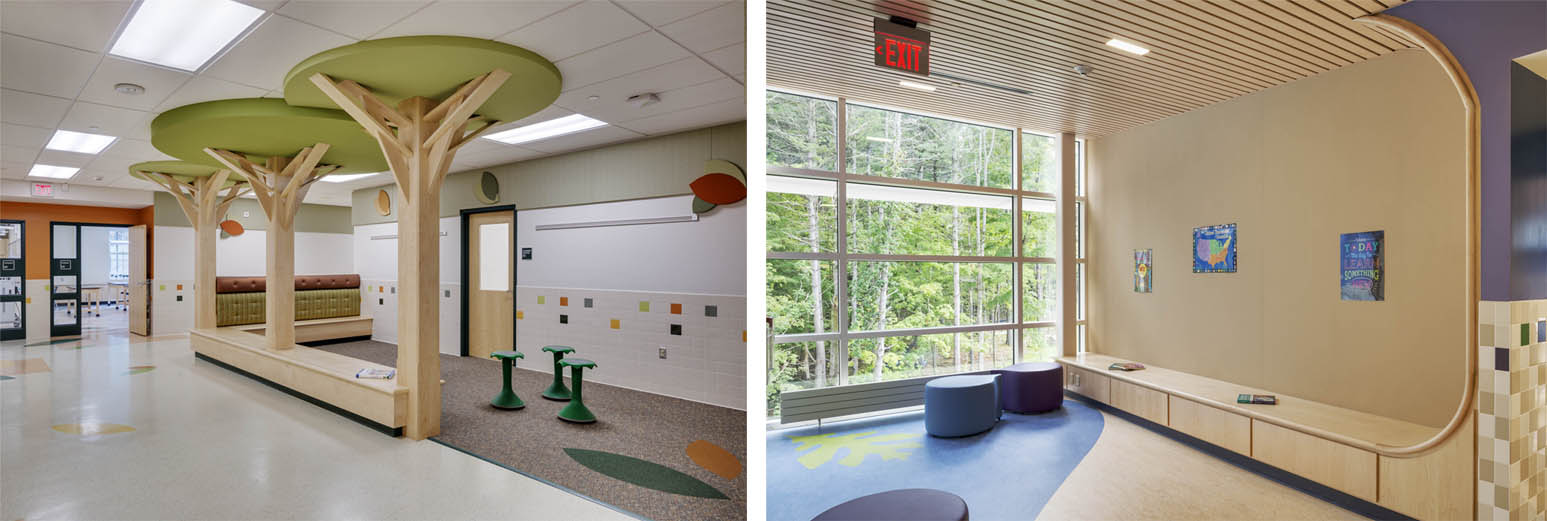
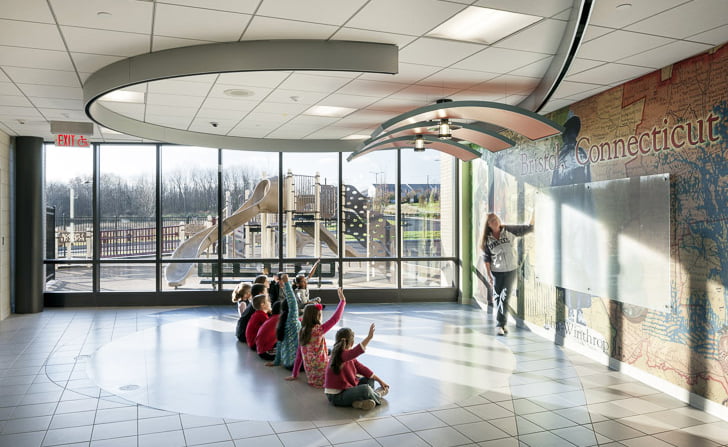
The idea of a breakout space is to create an area that differs from the classroom setting. This is accomplished several ways. Define these areas with a variety of ceiling heights, lighting treatments, and floor finishes and incorporate bright colors. With these varied elements, a unique, flexible, creative, learning environment can be achieved.
Middle School/High School
For Middle and High School, the breakout spaces and seating needs to be more flexible as students in this age group have a growth spurt between freshman and senior years. Therefore, the learning spaces should offer several seating choices, from high-top desks for those who like to stand with their laptops, to flexible soft seating that is easy to slide and move, but too heavy to pick up.
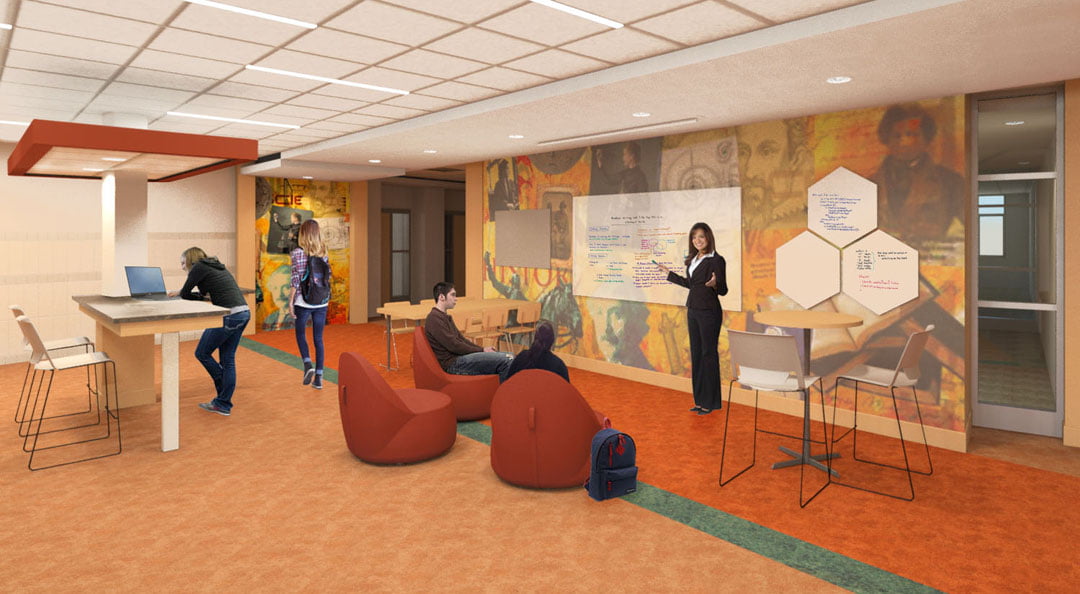
Technology is a must for these students and would include smart boards, a projector and screen. This breakout space would accommodate a cluster of up to ten teens. Again, the idea is to provide an environment that is different than the rest of the educational spaces. Change the circulation space to a multidisciplinary space where students can work individually, or collaborate in small groups. These spaces inspire students and offer flexible learning options. Students can sit, stand, or work at a table either solo with an iPad and headset, or work with others in a small group. Informal relaxed seating allows students to be more comfortable and offers different seating options.
The staff members or educators could be part of these smaller working groups with a few students, or to do project based learning. This is different than other circulation space. The furniture is durable, and maintainable. The environment needs to address sound, and offer a quieter space by using special acoustical treatments, so as not to disturb adjacent classrooms.
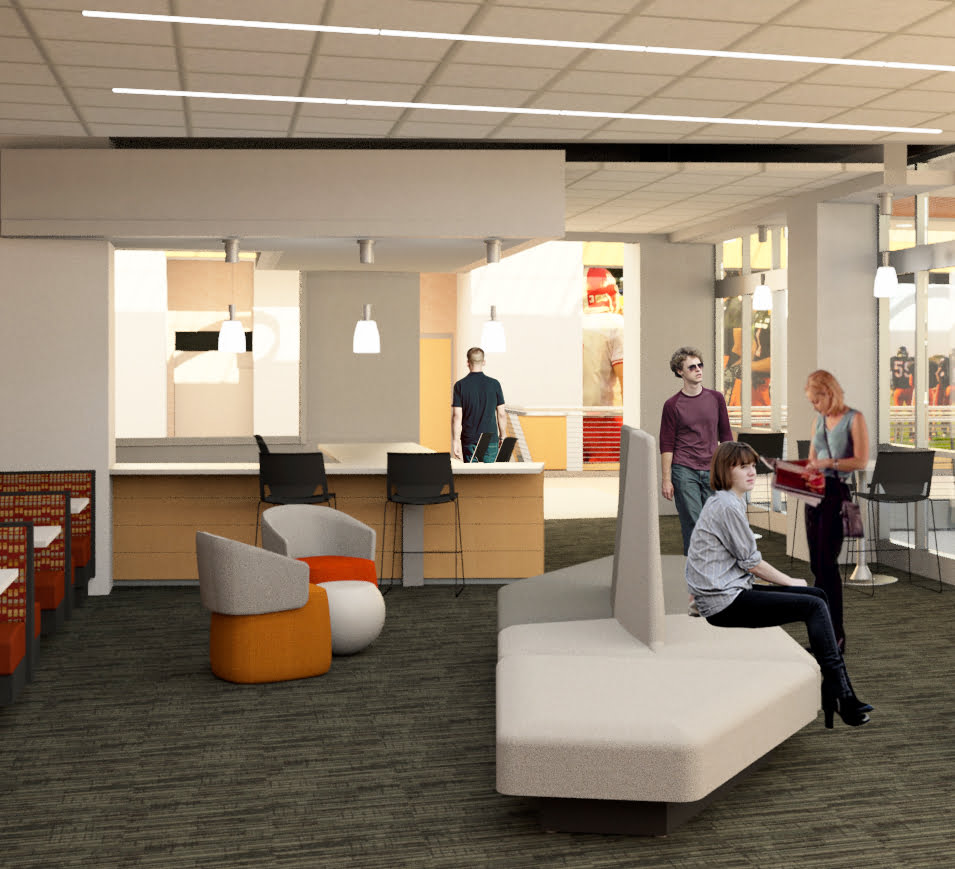 For these spaces lighting should also be different than a typical classroom. A variety of lighting is needed such as task, and dimmable, and overall lighting needs to be flexible to accommodate numerous activities. The ceiling treatments help define these areas of flexible use. All materials used in these spaces must to be durable and high performance; furniture, fabrics, flooring, and wall treatments are needed for this common area to be successful.
For these spaces lighting should also be different than a typical classroom. A variety of lighting is needed such as task, and dimmable, and overall lighting needs to be flexible to accommodate numerous activities. The ceiling treatments help define these areas of flexible use. All materials used in these spaces must to be durable and high performance; furniture, fabrics, flooring, and wall treatments are needed for this common area to be successful.
In breakout spaces, the colors are more vivid and offer a more creative and stimulating environment. These colors promote activity and interaction. Here in these spaces we foster creativity, collaboration, and inspiration. The use of art murals, quotes, and goals of how to treat each other, as well as fun graphic images can encourage team spirit and school pride.
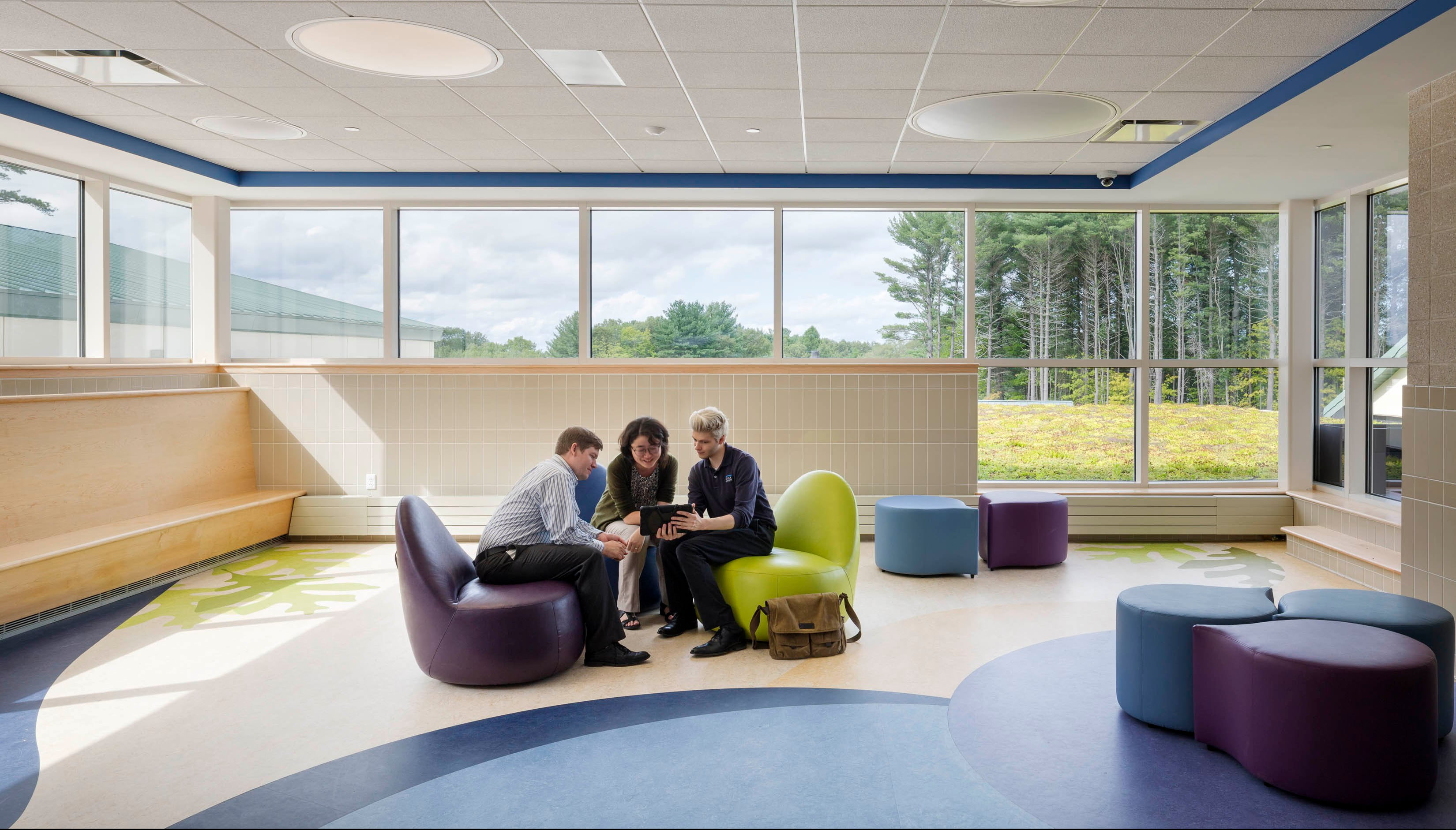
Summary
A successful educational environment offers opportunities for everyone to learn. Offering breakout space allows students to learn in a variety of ways, to work independently, one on one, or in a small group. The physical space should be flexible, comfortable, and colorful, and designed to inspire and support students for 21st century learning. With planning and thoughtful design, these breakout areas help create the ideal space for learning. ♦

